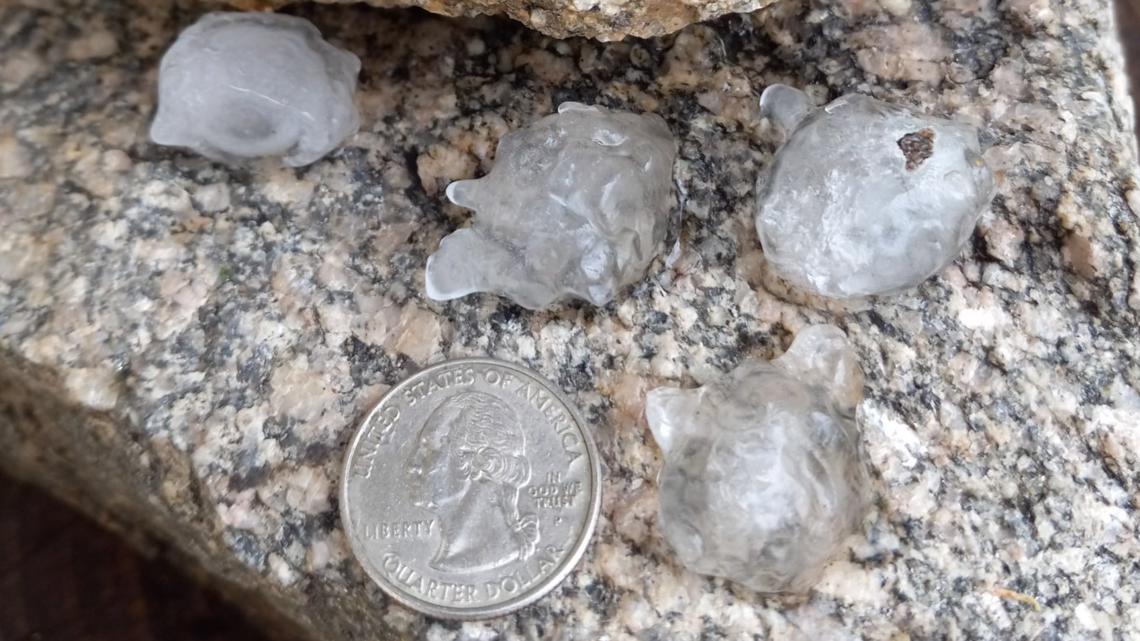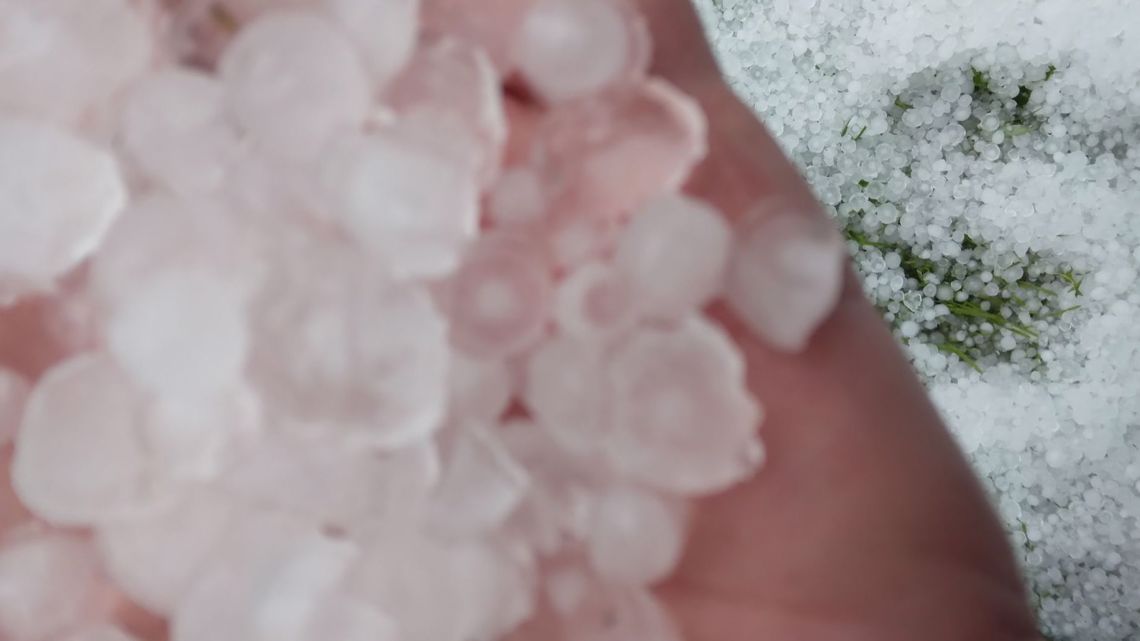MOLINE, Ill. — A severe thunderstorm made its way Monday, June 6 through the Quad Cities area, with hail being the biggest concern. We saw penny-size to ping-pong-ball-size hail.
Hail is ice that forms when raindrops are pulled by thunderstorms updrafts into the cold atmosphere and freeze, according to National Oceanic and Atmospheric Administration’s Severe Storms Laboratory.
They grow as they move upward and collide with liquid droplets that freeze onto the hailstone’s surface. They’ll continue to grow until they get too heavy or the updraft weakens. Then, the hail will fall.
When reporting on hail, meteorologists often compare hail size to a commonly known object, so it is easier to understand how large the hailstone is. Here are some of the commonly used terms:
- Pea-size hail is ¼ inch in diameter.
- Mothball-size hail is ½ inch in diameter
- Penny-size hail is ¾ inch in diameter
- Nickel-size hail is 7/8 inch in diameter
- Quarter-size hail is 1 inch in diameter.
- Ping-pong-ball-size hail is 1 ½ inch in diameter.
- Golf-ball-size hail is 1 ¾ inch in diameter.
- Tennis-ball-size hail is 2 ½ inches in diameter
- Baseball-size hail is 2 ¾ inches in diameter.
- Teacup-size hail is 3 inches in diameter.
- Softball-size hail is 4 inches in diameter.
- Grapefruit-size hail is 4 ½ inches in diameter.
Hail that comes in at a quarter size or larger is considered severe, according to NOAA.


It is hard to estimate how fast hail falls due to the size and shape of the hailstone, friction between the hailstone and surrounding air, wind conditions, degree of melting and environmental conditions. However, due to improvements in technology, there are some rough estimates of how fast they fall.
For hailstones less than an inch, hailstones fall at 9-25 mph. Hailstones between one and 1.75 inches fall at about 25-40 mph. Hailstones that are 2-4 inches fall at 44-72 mph, and hailstones greater than 4 inches can fall at speeds greater than 100 mph.


Hail can cause a lot of damage, according to the World Atlas. Hail affects drivers by causing slippery roads, reduced visibility and dents and broken windows in vehicles. If an aircraft flies through a hailstorm, the storm can cause damage to the plane. Hailstorms can also damage crops by breaking plants and stripping off their leaves and bark. In extreme cases, hail can even be fatal for animals and humans.
Hail causes significant damage to property each year, especially if the winds are strong and cause the hail to fall at an angle or nearly sideways. When this occurs, hail can tear up siding on houses, break windows and blow into houses. The Insurance Information Institute reported that hail-related insurance losses between 2000 and 2019 averaged between $8-14 billion a year in the U.S.
Nebraska, Colorado and Wyoming experience the most hailstorms in the U.S., according to NOAA. The states, known as the hail alley, average seven to nine hail days each year.
Click/tap here to get your full, up-to-date weather forecast.

